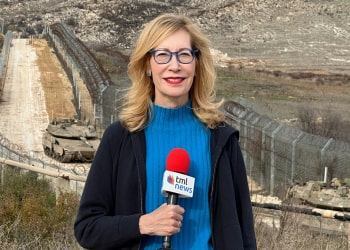Israel-Hezbollah Clashes Intensify as Region Races Toward War
Israeli airstrikes on Hezbollah positions killed 274 people in the deadliest day of fighting since the 2006 Lebanon War
The conflict between Israel and Hezbollah reached new levels of violence on Monday, as Israeli airstrikes in Lebanon killed at least 274 people and injured over 1,000, according to Lebanon’s Health Ministry. This marks the deadliest day of fighting since the 2006 Lebanon War, with Israeli forces launching more than 800 strikes targeting Hezbollah positions in southern Lebanon and the Bekaa Valley. In response, Hezbollah, the powerful Iran-backed armed group, fired approximately 180 rockets and drones into Israel. Although most were intercepted by Israel’s defense systems, the exchange of fire has heightened fears that the conflict could expand into a full-scale regional war.
For too long, Hezbollah has been using you as human shields. It placed rockets in your living rooms and missiles in your garage.
Israeli Prime Minister Benjamin Netanyahu, addressing the Lebanese people in a video message, stressed that Israel’s war is not with them but with Hezbollah, which he accused of using Lebanese civilians as human shields. “For too long, Hezbollah has been using you as human shields,” Netanyahu said. “It placed rockets in your living rooms and missiles in your garage.” He urged civilians to evacuate areas near Hezbollah weapons caches, which Israel has been targeting in its ongoing military campaign. “Take this warning seriously,” he said, as Israeli airstrikes continued to pound Hezbollah strongholds across southern Lebanon. “Once our operation is finished, you can come back safely to your homes.”
The intensifying conflict between Israel and Hezbollah follows weeks of escalating violence since the group began firing rockets and drones into Israel last October in solidarity with Hamas. Hezbollah’s involvement was sparked by the ongoing war between Israel and Hamas, which began after Hamas launched an unprecedented attack on Israel. The conflict has since developed into a broader exchange of airstrikes and rocket fire, causing widespread destruction along the Lebanon-Israel border and displacing tens of thousands of civilians on both sides.
In addition to targeting Hezbollah’s military infrastructure, Israel has sought to decapitate the group’s leadership. Israeli forces have launched targeted strikes aimed at high-ranking Hezbollah commanders in a bid to weaken the group’s operational capabilities. On Monday evening, Israeli jets struck a Hezbollah facility in Beirut, attempting to assassinate senior commander Ali Karaki, who leads Hezbollah’s southern front. This marked the fourth Israeli airstrike in Beirut since the conflict began, but Karaki’s fate remains uncertain. Israel’s military has been systematically eliminating key Hezbollah leaders, including Ibrahim Aqil, another senior commander involved in the 1983 bombings of the US Embassy in Beirut and the Beirut barracks housing American and French peacekeeping forces. Aqil was killed in an Israeli airstrike last week.
Israeli Defense Minister Yoav Gallant has been outspoken about the success of Israel’s campaign to dismantle Hezbollah’s military infrastructure. “In the past day, we are crushing what was built by Hezbollah for 20 years,” Gallant said. He emphasized that Hezbollah’s leader, Hassan Nasrallah, now stands isolated as key military figures have been taken out of commission. Gallant also said that entire units of Hezbollah’s elite Radwan Force had been destroyed, and tens of thousands of Hezbollah’s rockets were no longer operational due to Israeli strikes.
This holiday season, give to:
Truth and understanding
The Media Line's intrepid correspondents are in Israel, Gaza, Lebanon, Syria and Pakistan providing first-person reporting.
They all said they cover it.
We see it.
We report with just one agenda: the truth.


In the past day, we are crushing what was built by Hezbollah for 20 years
Despite the heavy toll on Hezbollah’s military assets, the group has vowed to continue its attacks on Israel until a cease-fire is agreed upon between Israel and Hamas in Gaza. Hezbollah’s deputy chief reiterated that the group would not stand down in its support for Hamas. Hezbollah’s involvement in the conflict has drawn widespread concern, as analysts warn that the situation could escalate into a broader regional war involving Iran, which backs both Hezbollah and Hamas.
The conflict has also drawn international attention. United Nations Secretary-General António Guterres expressed alarm at the escalating violence and the increasing civilian casualties. Lebanese officials have voiced similar concerns, with Lebanon’s Information Minister Ziad Makary accusing Israel of engaging in “psychological warfare” by sending mass text messages to Lebanese civilians warning them to evacuate areas near Hezbollah weapon sites. Human rights groups have also criticized Israel’s tactics, arguing that civilians have little means of knowing if they are near military targets and are left in a precarious situation as they attempt to flee the violence.
Civilians in both Lebanon and Israel are facing severe hardships as the fighting continues. Inside Israel, life in the north has been severely disrupted by Hezbollah’s rocket fire. Schools and businesses remain closed in major cities like Haifa and Nahariya, with residents staying near bomb shelters as air raid sirens regularly warn of incoming rockets. The Israeli government has declared a “special situation” on the home front, a legal measure granting authorities greater control over civilian life during emergencies. Although no deaths have been reported in Israel as a result of Monday’s attacks, the disruptions have significantly affected daily life for tens of thousands of Israelis.
Meanwhile, the humanitarian toll in Lebanon continues to rise. Thousands of civilians have fled their homes in southern Lebanon, clogging major roads toward Beirut as they seek refuge from the ongoing Israeli airstrikes. According to Lebanese officials, many of those killed in the strikes were women and children, though the exact number of Hezbollah fighters killed remains unclear. The damage to civilian infrastructure has been catastrophic, with entire neighborhoods destroyed, leaving residents homeless and without access to basic services.
The conflict has also spilled over into Syria and the Israeli-occupied Golan Heights, where exchanges of artillery and rocket fire between Israel and Hezbollah have become frequent. Hezbollah launched its first attacks in this region on October 8, targeting Israeli positions in the disputed Shebaa Farms area. Israel responded with artillery and drone strikes on Hezbollah positions near Lebanon’s southern border. The United Nations Interim Force in Lebanon (UNIFIL) has reported nearly 8,000 incidents of artillery fire from Israel into Lebanon since October, with nearly 1,000 incidents of artillery fire from Hezbollah into Israel during the same period.
As the conflict continues, the United States has begun increasing its military presence in the region. The Pentagon confirmed that additional US troops have been deployed to the Middle East in response to the escalating violence. While the US has not provided specifics on the number of troops or their mission, the move reflects Washington’s growing concern about the possibility of a broader conflict involving other regional actors, including Iran. The State Department has also urged American citizens to leave Lebanon, citing the increasing risk of a regional war.
Despite Israel’s relentless air campaign, Hezbollah’s leadership has shown no signs of backing down. The group’s deputy chief announced that Hezbollah will continue its operations until Israel ceases its military actions in Gaza. The ongoing violence has raised concerns that ground troops could soon be drawn into the fighting, further exacerbating the situation and potentially leading to even more widespread devastation.
The memories of the 2006 Lebanon War loom large over the current conflict. That war resulted in the deaths of over 1,000 Lebanese civilians and around 150 Israelis, with much of Lebanon’s infrastructure left in ruins. Many fear that the current escalation could lead to a similar outcome, with both sides suffering heavy losses and neither achieving a clear victory.
What Hezbollah hasn’t understood through force, it will understand through more force
For now, the fighting shows no signs of slowing. Israeli officials have made it clear that they are determined to continue their military operations until Hezbollah is forced to retreat from the border and dismantle its military capabilities. A senior Israeli official stated, “What Hezbollah hasn’t understood through force, it will understand through more force.” This hard-line approach suggests that Israel is preparing for a prolonged conflict, with no immediate resolution in sight.
As civilians in both Lebanon and Israel continue to suffer the consequences of the escalating violence, the international community has called for urgent de-escalation. However, with both sides entrenched in their positions, it remains unclear how or when the conflict will come to an end.

